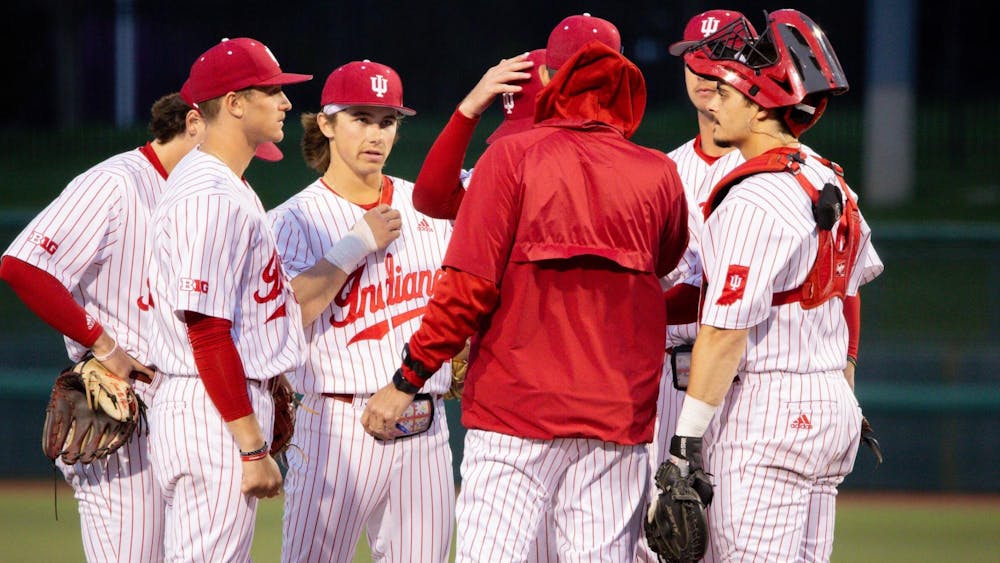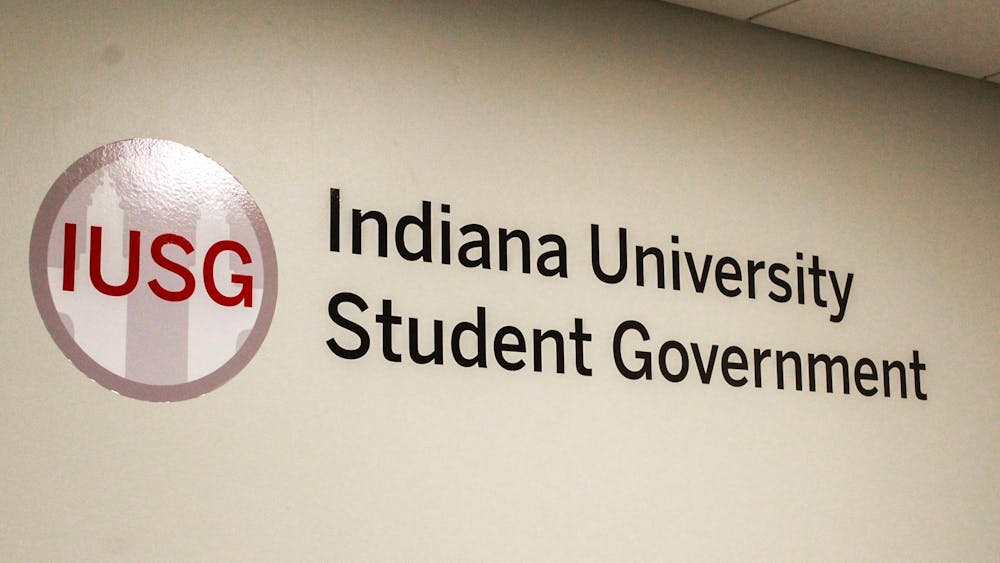“The best damn war columnist in history ... TRULY THE BEST. Love Ernie.”
“A dude who did combat journalism in WWII and got his head blown off, then got an IU building named after him.”
“Who the fuck is that?”
“I have no idea.”
Of 98 students and alumni anonymously surveyed, 25.5 percent said they didn’t know who Ernie Pyle was.
The former IU student and Indiana Daily Student editor-in-chief is the namesake of the journalism building next to the Indiana Memorial Union, the honors journalism program and a travel course offered in the former School of ?Journalism.
Pyle was killed by machine gunfire while reporting World War II from the Pacific in 1945. April 18 will mark the 70th anniversary of his death.
The anniversary of his death will be marked with ceremonies at his sculpture outside Franklin Hall at 12:15 p.m. Saturday, in his hometown of Dana, Ind., and in Honolulu, where he is buried.
But 70 years after his death, the number of people who were alive during the war and during his works’ original publication is ?dwindling.
Seventy years after his death and 92 years after his departure from IU, his legacy’s stability is coming more and more into question.
After the plans for the new Media School were made public, responses varied. Some thought it would be good.
Some feared for the future of the journalism ?program.
Others were concerned with the legacy of one of its most famous students: ?Ernie Pyle.
“The legacy of Ernie Pyle is journalism,” said Jerry Maschino, director of the Ernie Pyle Legacy Foundation.
Around the time of the merger, Maschino and seven others, all relatives of Ernie Pyle, formed the foundation to preserve Pyle’s legacy by reaching younger people and getting their message out to preserve Pyle’s legacy.
“I couldn’t have gotten involved in a more difficult time period because that six months that we were getting going and everything was the time the Media School was approved and all the changes were being made,” Maschino said. “So that was difficult.”
Despite the formation and working through the Media School’s transition, he said he thinks the organization got a strong start.
“It has been received very well, better than we thought, Maschino said. “A lot of people all remember Ernie Pyle and all know something about him, and they all agreed that sometimes things get lost over ?the years.”
Maschino said he thinks the uproar about the School of Journalism’s termination may have helped get the Media School on the right track.
“I think now because of all the uprising, it might be OK now because they’re gonna keep Ernie Pyle Hall, and the statue came in at the same time and then we’re in this,” Maschino said.
While those related to Pyle think the school may be on the right track, others seem to dissent.
ESPN the Magazine writer Wright Thompson is a graduate of the University of Missouri. He never went to IU. He isn’t a war correspondent, either. But he cares about Pyle’s legacy.
“Every single good and bad thing America has done since the end of World War II flows straight from this idea that this generation had about itself and that is an idea that was completely born in the minds and the hearts of Americans because of the columns of Ernie Pyle,” Thompson said. “So a school that wants to study the impact of media on America and doesn’t name itself after the single most influential cultural shaper of the 20th century is full of people who are, frankly, too dumb to have their jobs and should quit.”
Associate Professor Emeritus Owen Johnson has been closely studying the work of Ernie Pyle since 1998. He said Pyle’s work stands out from others for multiple reasons.
“He was writing columns, so he wasn’t dealing with hard deadlines where he had to get something out,” Johnson said. “I mean, he fretted and worried about whether he would get his columns done ... He was one of the few people who could do that on a regular basis.”
James Tobin, the author of “Ernie Pyle’s War: America’s Eyewitness to World War II,” said he thinks Pyle’s attention to detail is an ?additional skill students should focus on while in school.
“The legacy of Ernie Pyle ought to be the kind of fine-grained attention to personal details in the people the journalists write about,” Tobin said. “To write about people and their everyday lives was Ernie’s purpose, and there’s no reason that journalists today can’t follow that example.”
The skills students are expected to learn, and the skills students expect to learn while they follow in Pyle’s footsteps, were one reason why alumni and student uproar against the Media School was so prevalent.
“I think the University administration, during all the discussion about the Media School, became very aware that for alumni, the connection of Ernie Pyle and strong, ?professional journalism skills is ?considered very important,” Johnson said.
Tobin said, though, that writers with Pyle’s skills do not come around frequently.
“People have to appreciate that journalists with Pyle’s talent come along not very often,” Tobin said. “Once in a generation, maybe. So, it’s understandable that we don’t have a lot of Ernie Pyles today. That’s like saying we don’t have a lot of William Faulkners today. Ernie was a kind of homespun genius, and there aren’t very many of those.”
Of the 36.2 percent of nonjournalism majors who had never heard of Ernie Pyle until the anonymous survey, though, some students’ interests were peaked.
“I do not know who Ernie Pyle is, although I’m curious as to who this person ?was now.”





